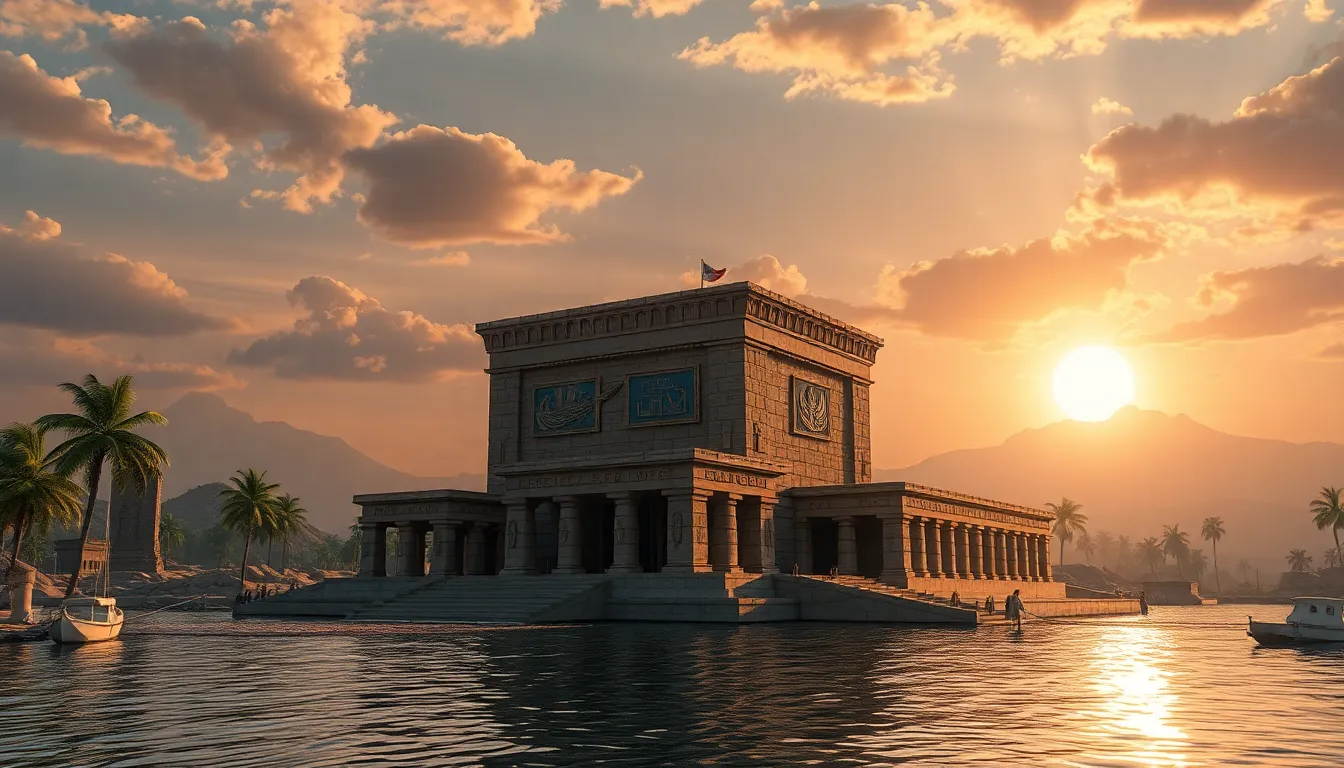The Temple of Sobek: The Protector of the Nile
I. Introduction
Sobek, the ancient Egyptian deity often depicted as a crocodile or a man with a crocodile head, is revered as the protector of the Nile. This powerful god symbolizes the life-giving waters of the Nile, which were crucial for agriculture and sustenance in ancient Egypt. The Temple of Sobek, located in the city of Kom Ombo, holds great significance in ancient Egyptian culture as a center of worship, ritual, and community.
This article explores the rich history, architectural marvels, and cultural importance of the Temple of Sobek, as well as its enduring legacy in modern times.
II. Historical Context of Sobek
Sobek’s origins can be traced back to the early dynastic period of Egypt, where he was associated with the Nile, fertility, and military prowess. As a god of water, Sobek was believed to control the floods that fertilized the land, making him an essential figure in agriculture.
Throughout the dynasties, Sobek’s worship evolved:
- In the Old Kingdom, Sobek was primarily honored as a fertility god.
- During the Middle Kingdom, he became associated with the military, symbolizing strength and protection.
- By the New Kingdom, Sobek was integrated into the pantheon as a significant deity representing the dual nature of both creation and destruction.
III. Architectural Features of the Temple of Sobek
The Temple of Sobek is a remarkable example of ancient Egyptian architecture, showcasing a unique design and layout. The temple complex is characterized by several key structural elements:
- Pylons: The temple’s entrance is marked by massive pylons, symbolizing the gateway to the divine.
- Sanctuaries: Within the temple, sanctuaries were dedicated to Sobek and his consort, Hathor, where rituals and offerings took place.
- Carvings: The walls are adorned with intricate carvings and reliefs that depict Sobek in various forms, emphasizing his dual nature as both a nurturing and fearsome deity.
The architectural style not only reflects the religious significance of Sobek but also serves as a testament to the artistry and engineering prowess of ancient Egyptians.
IV. The Temple’s Location and Significance
Situated near the banks of the Nile in Upper Egypt, the Temple of Sobek holds a strategic geographic position. This location is vital for several reasons:
- Agriculture: The temple played a crucial role in local irrigation practices, ensuring the fertility of the surrounding lands.
- Trade Routes: Its proximity to the Nile facilitated trade, connecting it with other major cities and increasing its importance as a cultural and economic hub.
- Religious Center: As a center of worship, the temple attracted pilgrims and visitors who sought the blessings of Sobek.
V. Rituals and Worship Practices
The Temple of Sobek was a vibrant center for various rituals and worship practices that were integral to the local community:
- Ceremonies: Daily rituals included offerings of food, flowers, and incense to honor Sobek.
- Priests and Priestesses: A dedicated group of priests and priestesses conducted the rituals, maintaining the temple’s sacred space and performing rites to ensure Sobek’s favor.
- Festivals: Major festivals, such as the Opet Festival, celebrated Sobek’s role in fertility and the annual flooding of the Nile, bringing together the community in joyous celebration.
VI. Archaeological Discoveries and Research
Archaeological excavations at the Temple of Sobek have yielded significant findings that enhance our understanding of ancient Egyptian society:
- Artifacts: Numerous artifacts, including votive offerings and inscriptions, have been discovered, revealing insights into the religious practices of the time.
- Excavation Efforts: Ongoing research continues to uncover new layers of history, with archaeologists working to preserve and document the temple’s vast heritage.
- Societal Insights: Findings have provided a deeper understanding of the social and political structures of ancient Egypt, including the relationship between religion and daily life.
VII. The Temple of Sobek in Modern Times
Today, the Temple of Sobek stands as a testament to ancient Egyptian heritage, facing both challenges and opportunities:
- Preservation Efforts: Efforts are underway to preserve the temple from natural erosion and human impact, ensuring its survival for future generations.
- Tourism: The temple attracts tourists from around the world, contributing to the local economy and raising awareness of ancient Egyptian culture.
- Cultural Influence: The legacy of Sobek and the temple continues to inspire contemporary art, literature, and popular culture, reflecting the enduring fascination with ancient Egypt.
VIII. Conclusion
Sobek’s significance as the protector of the Nile is deeply rooted in the cultural and religious fabric of ancient Egypt. The Temple of Sobek not only served as a center of worship but also as a vital part of the community’s agricultural and economic life.
As we reflect on the enduring legacy of the Temple of Sobek, we are reminded of the importance of exploring and appreciating ancient Egyptian heritage. Further study and preservation efforts are essential to ensure that the stories and teachings of this remarkable civilization continue to inspire future generations.




